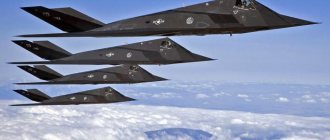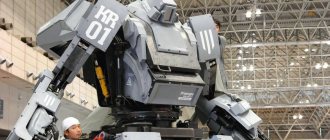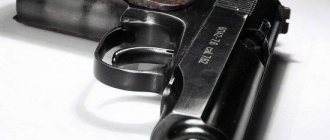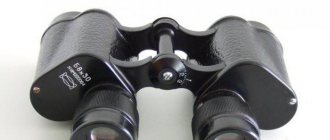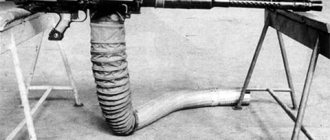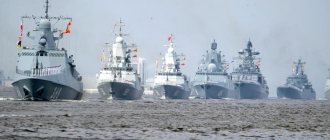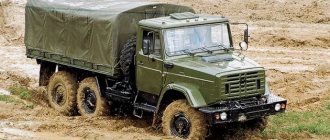What are military binoculars?
Since the invention of binoculars, little time has passed for their use for military purposes. After all, discovering and examining an object is sometimes a key moment in the course of action. At the same time, military binoculars can be subjected to harsh operating conditions both during street patrols and during combat operations in the ground and naval forces, so they must have a set of reliability qualities that help fulfill the tasks assigned to various branches of the military.
Reliability requirements are higher for military binoculars compared to civilian ones, since one’s own life directly or indirectly depends on them, and this is the fundamental difference.
A common mistake upon first acquaintance is that camouflage coating is the prerogative of military binoculars, but you need to understand that in the requirements of special forces, appearance does not play the main role. The use of camouflage is strongly related to the type of terrain, so the selection of a color palette is carried out directly on the terrain, if such a task is required (intelligence operations). In most cases, the binoculars will be black because the protective coating or hammer paint is beige (green). Camouflage binoculars can be used by hunters, gamekeepers and birdwatchers to avoid spooking animals, who may not be as picky about camouflage.
Binoculars in the Red Army 1941-1945.
At the end of the 1920s. The industrialization of the country began, the main goal of which was to strengthen the Red Army. In addition to the increase in numbers, the troops are being saturated with the latest types of weapons. For example, in 1927, the ABVT had 90 tanks and 1,050 vehicles; by 1935, their number increased to 8 thousand tanks and 35 thousand vehicles, and by mid-1941, the number of tanks increased to 23 thousand.
As mentioned earlier, at the beginning of 1934, the Red Army had 107 thousand binoculars; by 1941, this figure had increased to approximately 450 thousand, and more than half of all binoculars were B-6 models.
By the early 1940s. The Red Army had a fairly large range of binoculars that had almost the same technical characteristics, taking into account the models intended for use with a gas mask: seven 6 x 30 (B.G. 6 x 30, B.Ts. 6 x 30, A.K. 6 x 30, B-1, binoculars 6 x 30 manufactured by LOMZ, B-6, BV), two 8 x 30 (manufactured by plant No. 19 and B-3), three 8 x 40 (manufactured by LOMZ, B-2 and VS) , binoculars B.T. 7 x 50 and B.G. 4 x 50. This situation arose, firstly, due to the historical features of the formation of the optical industry, each enterprise produced its own model of binoculars, which was inherited from the company that founded it; secondly, it was due to the search for an optimal prototype for further mass production. According to the areas of application in the army, binoculars can be divided into naval (B.T. 7 x 50 and B.G. 4 x 50, and also partially 8 x 40), intended primarily for air defense units (8 x 40), and universal , used in all branches of the army (6 x 30 and 8 x 30). In addition to Soviet-made binoculars, the officially used optics were those left over from a series of armed conflicts on the territory of the former Russian Empire in 1917–1922. (Civil War period), purchased in Germany in the mid-1920s, captured during armed conflicts in the Far East, the Soviet-Polish War of 1939, the Winter War of 1940, the occupation of the Baltic states... These were mainly binoculars 6 x 30 produced by Polish companies H. Kolberg i S-ka, PZO and German Zeiss.
The main enemy of the USSR during the Second World War, Germany, produced about twenty models of hand-held binoculars during the war: 6 x 30 (Zeiss Silvamar, Busch “bakelitglass”), 10 x 50 (Zeiss Dekaris, Zeiss DF 10 x 50H, Leitz Mardix, Hensoldt Dialyt), 7 x 50 (Zeiss Binoctar, Zeiss Septar, Zeiss UDF 7 x 50H, Leitz Marsept, Leitz 7 x 50 PorroII), Zeiss Deltar 8 x 40, Zeiss DF 8 x 60, Zeiss UDF 8 x 60H, Leitz 8 x 60 PorroII, Zeiss DF 15 x 60, etc. These are mainly small, specialized models intended for use on naval ships and submarines (with enhanced protection against moisture penetration). The ground units were armed with two 6 x 30 models, a service version of the Zeiss Silvamar (produced by more than two dozen companies) and a semi-experimental Busch model with a bakelite body, two 7 x 50 models (Zeiss Binoctar, Leitz Marsept), 8 x 30 Zeiss Deltrentis and three 10 x 50 models (Zeiss Dekaris, Leitz Mardix and Hensoldt Dialyt with roff prisms), as well as those produced for the Reichswehr, Busch 6 x 30 Millux and Leitz 6 x 30 Bidox. Binoculars left over from the Kaiser's army and captured as trophies in Czechoslovakia, Poland, Norway, France, Belgium, Holland, Yugoslavia, Greece, the USSR were used to a limited extent... As we can see, the German armed forces had the advantage of having binoculars with tenfold magnification and highly specialized models and even greater problems with maintenance of such a model variety compared to the Red Army.
Read the continuation of the article in the February 2022 issue of the journal “Science and Technology”. Both printed and electronic versions of the magazine are available. You can subscribe to the magazine here.
On our website you can purchase unique monographs and photo albums by Anatoly Verstyuk dedicated to destroyers. In the store on the website you can also buy magnets, calendars, posters with aviation, ships, and land equipment.
A little history
Just a few years ago, when talking about domestic military binoculars, they meant binoculars from the Red Army or BPP 6x30. It was produced in pre-war times and since the 1930s at various factories, for example the most famous:
- Leningrad Optical-Mechanical Plant
- Kazan Optical-Mechanical Plant
- Krasnogorsk Mechanical Plant
- Zagorsk Optical-Mechanical Plant
Soviet sniper Sergeant Tsyrendashi Dorzhiev from the 202nd Infantry Division at a firing position.
After the war, the production of binoculars did not end, but the BPP changed the magnification and became 8x. Below is a photo of a BPP 8x30 from 1961.
Photos from the website Maksimov.su
Time has passed, and out of a large number of factories, only KOMZ (Kazan Optical-Mechanical Plant) continues to produce these military binoculars, only now they are called BPTs 8x30 (field, central focusing), as well as slightly improved models, for example, with a rubberized coating BPTs6 8x30 and higher multiplicity BPC 10x40. Of course, modern materials are now used in production, which are less susceptible to corrosion, but in terms of quality and strength, everything remains at the same high level.
Modern domestic military binoculars are also BPOs 7x30. In military terms, it is known as BP 7x30 “Second”. At a later time, an alternative version with a larger lens appeared - BPOs 10x42. The binoculars have a rubberized body for transportation without a case, a nitrogen-filled optical path and separate focusing on the eyepieces, but the main feature is the ability to determine the distance using a goniometric grid.
If you know the actual width of an object, you can find out the distance to it. To do this, you just need to count how many divisions the object occupies and substitute it into the formula:
R=(L/n)x1000
L - actual width of objects
n - number of divisions
BOC and BPO binoculars are still in service and are part of the military equipment of commanders to ensure control of actions. But this is mainly associated with ground forces. Other units have binoculars that differ significantly from the popular BOC.
Review of manufacturers
Let's look at the most famous manufacturers of Soviet times.
ZOMZ - Zagorsk Optical-Mechanical Plant (began work back in 1935).
During the Soviet years. In 1945, periscopes with high magnification PBU began to be produced here - they were actively and successfully used during the storming of Berlin and earned the highest praise from the military.
In 1950, the plant began producing the first Soviet night vision devices.
In 1983, the production of BPC 20x60 binoculars began - this was the most popular device in our country and abroad at the very end of the 20th century.
KOMZ - Kazan Optical-Mechanical Plant (1935).
During the war years, the plant produced 700 thousand binoculars, 30 thousand sights for guns, mortars, and tanks. At the end of the 1980s, a whole collection of night devices “Baigysh” was produced here for civilian use. They began producing civilian binoculars, pseudo-binoculars, various monoculars and sights. Today, JSC KOMZ continues to mass-produce daytime observation equipment.
LOMO - Leningrad Optical-Mechanical Association (1914).
JSC LOMO today is considered one of the leading domestic enterprises that produces optical, optical-electronic, optical-digital and optical-mechanical devices, as well as systems and complexes. In 1924, the first domestic stationary film projector “Rus”, using an arc lamp, was created at the plant. In 1930, serial production of the first Soviet mass amateur camera, “Fotokor No. 1,” began, and many film projectors were also produced here.
LZOS - Lytkarino Optical Glass Plant (1934).
The instrument-making enterprise was created to produce floodlight systems with mirrors up to 150 cm in diameter. LZOS was entrusted with the production of many complex optical parts, such as: quartz windows of the long-term orbital stations "Salyut" and Soyuz spacecraft, glazing elements that bear the main temperature loads when passing through the dense layers of the atmosphere of the first tier of the "Buran", and other devices.
Binoculars for border troops and observation posts
To monitor a large area, binoculars must have a very wide field of view. This is achieved by extremely large lens diameters and medium or even low magnification. This is the binocular PNB (Binocular Observational Device) from the Novosibirsk Instrument-Making Plant. This is a stationary device with magnification, depending on the version, from 8x to 15x and lens diameter
PNB-1
PNB-2
PNB-3
| Device | Magnification, times | Entrance lens diameter, mm | Field of view, degrees |
| PNB-1, PNB-2 | 15 | 110 | 6° |
| PNB-3 (PNB-3-1) "Falcon" | 10 | 65 | 7° |
Unlike PNB-3-1, the PNB-3 device is additionally equipped with a control tube and a lighting system. And PNB-1 has a special mount for permanent fixation in place with dials for accurately determining terrain angles, PNB-2 has a regular wooden tripod for non-permanent control points.
Navy binoculars
Historically, ships used the BPC 7x50 and 10x50 binocular variants. There is a misconception that high magnification binoculars are required at sea to determine the type, purpose and ownership of a vessel located at a great distance. In fact, everything is completely the opposite, since many do not take into account the increase in hand tremors due to pitching on the waves. This misconception is associated with one legendary BPC 20x60 binoculars, which were called the largest binoculars in the USSR. At the beginning of 1993, for the needs of the coast guard, this giant was manufactured at ZOMZ in order to monitor the coastline from equipped positions and the need to have a device that was lighter and more mobile than the existing PNB at stationary posts. You can call it seaborne, but you need to take into account that the observation was carried out not from the sea, but at sea. It is very difficult to hold such a magnification in your hands, and even with a weight of 1.5 kg due to the 60 mm lens. It's another matter if the binoculars have image stabilization.
In 2011, the Shvabe holding of the Rostec state corporation, which unites domestic manufacturers of optical products, wins a tender to supply the Navy with absolutely innovative binoculars, and in 2016 it puts the BKS 20x50 into service. In the civilian market it is known as Farvision BKS 20x50.
The key feature of the BKS 20x50 is that it is equipped with an image stabilization system that does not require power supplies. The binocular body has strong magnets, and its internal optical systems are movable. Magnets do not fix the lenses, and the inside of the binoculars “floats” in the magnetic field. When the binocular body moves due to shaking, the device compensates for it and maintains a stable image.
It is worth mentioning that sea salt in a suspension of water in the air easily gets on the anti-reflective coatings of lenses and metal parts of binoculars, both outside and condenses inside, and therefore marine binoculars require the best sealing. We talk more about marine binoculars in a separate article.
What kind of binoculars were there in Soviet times?
In Soviet times, the following types of binoculars were produced:
- army;
- field;
- marine;
- theatrical
All military binoculars have a rangefinder reticle, which distinguishes them from field binoculars. They have a lot of varieties. Some models were equipped with filters, and Soviet binoculars produced in the 80s boasted multi-layer coated optics.
Nowadays on store shelves you can sometimes find domestically produced binoculars, supposedly made “following the Soviet model,” but their quality is much inferior to real Soviet products.
Marine binoculars from the USSR era were durable instruments that could work in extreme conditions. They were distinguished by reliable protection from moisture and a clear picture. As for theatrical Soviet models, many families keep them in memory of their grandparents, using them to this day.
Among Soviet optical equipment, several models of binoculars can be distinguished, which were produced at the Zagorsk Optical-Mechanical Plant.
BPC 20x60
The abbreviation BPC stands for “Prism binoculars with central focusing.” It is considered one of the most successful models of the optical industry of the USSR. These are “civilian” field binoculars designed for observing nature, animals and other distant objects. The operating temperatures at which this device can operate range from -40 to +40C. The binoculars have high resolution and high magnification.
It was released in the 80s. This is a fairly massive but reliable tool that has:
- good optics;
- center focusing;
- high-quality PORRO prisms;
- reliable metal case.
The device weighs approximately 1.5 kg without a case.
Naval binoculars of the USSR Navy B7x50
These are real Soviet naval binoculars with clear and smooth mechanical settings. The picture of the instrument will always be clear, even in poor lighting. The body of the device is covered in a unique braid, thanks to which the hand does not slip when working with binoculars, and it is almost impossible to accidentally drop it into the water.
Such instruments are used to observe moving objects or when a sea vessel is moving at high speed. Despite the large size of binoculars and their weight, people still appreciate their “thought out” design by master opticians and the highest quality of lenses and prisms, thanks to which a person’s vision does not get tired for a long time.
Using Soviet marine binoculars B7x50, you can find various objects, use a goniometric grid, measuring angles horizontally and vertically. It works great in pitching and extreme conditions, and weighs 1 kg without the case.
Soviet optical technology is sometimes in no way inferior in image quality to modern devices, but amateurs try to purchase not “remakes for Soviet binoculars,” but originals. Since we are often talking about rare and expensive models, their cost is not always affordable for the average consumer, and it may be impossible to insure against buying a fake.
From time to time, advertisements for their sale appear on the Internet, and if you are a fan of Soviet binoculars, you will probably be able to distinguish a “replica” from a genuine model from the times of the USSR. In the vast majority of cases, a “replica” costs less, and if you compare it with the original, the differences can be found and felt very quickly.
15.08.2019 18455
Military binoculars of other countries
Since at the beginning we looked at army binoculars from the Second World War, it is worth mentioning here that under the Lend-Lease program, analogues of the BPC 6x30 were supplied from the USA, Canada, Hungary, Poland, France and Great Britain, but they differed significantly in design they didn’t, although collectors will give us a fair remark here.
Until 2000, the US Army considered binoculars a universal item for all types of units and decided to create three main binoculars - M22, M24 and M25. They are supplied by Northrop Grumman, the first two are familiar under the Fujinon brand (Japan), and the third is Fraser-Volpe Corporation (USA).
The M22 binoculars are a staple for both the US Army and Marine Corps.
- Magnification - 7 times
- Lens - 50 mm
- Reticle with graduated horizontal and vertical scales
- Rubberized body
- Buoyancy and impact resistance
However, the M22 was too large to meet the needs of all types of troops. As a result, the Army purchased a smaller version of the binoculars in 2005, designated the M24.
Although the M24 is smaller and lighter than the M22, it provides the same magnification.
- Magnification - 7 times
- Lens - 28 mm
- Rubberized body
- Buoyancy and impact resistance
But the polar opposite of the M22 in terms of weight is the M25 Gyro-Stabilized Binoculars, a military image-stabilized binocular made by Fraser-Volpe Corporation that is designed for long-range reconnaissance while the observer may be on a ship, aircraft, or other vehicle.
Unlike the domestic BKS 20x50, the American counterpart requires a power source in the form of 2 AA batteries.
- Magnification - 14 times
- Lens - 40 mm
- Reduced image motion - up to 98%
- Buoyancy and impact resistance
- Effective observation range - 2500 meters
As for European manufacturers, the Germans and Austrians are leading in the military binoculars segment. The most famous brands are Carl Zeiss and Swarovski, which are considered the standard in optics. It’s worth mentioning Zeiss at least out of respect for the progenitor of optical products. The company has gone from the birth of lenses and systems to modern perfection, while its binoculars participated in the First and Second World Wars, several factories were created in different countries (including Russia), working using Zeiss technologies. They are more chosen because of their unique image quality than their body parameters.
Due to its small size and high quality lenses, the Zeiss Terra ED line is used in reconnaissance operations and for surveillance of special forces.
Swarovski also has a long history, as continuous production of the Dienstglas Porro 6×30 began in the period 1939-1945 for the German army. Later, the Habicht became one of the most recognizable military binoculars.
The Swarovski Habicht line is a classic optical system that has been tried, tested and continually improved over many generations.
The widest range of Millitary binoculars is offered by Steiner (Germany); the products of this company can most often be found in the hands of foreign units, especially the Marines.
The Steiner Commander line meets all the required military standards, such as high crush strength, unsinkability and HD coated optics.
Design Features
Devices with optical purposes include not only binoculars, but also various monoculars and spotting scopes.
The main purpose of which is to view objects and objects at a considerable distance with magnified images. Structural elements of binoculars:
- Lens. Part of an optical system that forms an image of a distant object. There are lens ones, in which the image is formed using lenses, and there are mirror ones, using mirrors. There is also a combined lens - a mirror-lens lens.
Mirror and mirror-lens lenses are most often used for the production of astronomical telescopic devices. Lens lenses are used to produce binoculars.
- An eyepiece is an optical system used to observe the image obtained using a lens and a revolving system. To ensure that the eyepiece does not distort the image during use, it is produced by gluing together several lenses. The use of an increased number of lens layers in the eyepiece makes it possible to increase the clarity and sharpness of the image, which can be seen with magnification at a wide viewing angle.
But an increase in the number of lenses leads to an increase in quality and, accordingly, an increase in price.
- Reversing system - necessary for reversing the image obtained using the lens.
Main technical characteristics and nuances of binoculars
Particular attention should be paid to the optical characteristics, because The observational abilities of binoculars depend on them.
Magnification (multiplicity). This is the ratio of the angular size of the image of a small object, visible through binoculars, to the angular size of the object itself, which can be seen visually. In other words, how much a visible object can be magnified when viewing its parameters through a lens.
Magnification is distinguished by the degree of magnification:
- Small - up to four times;
- Average - from four to ten times;
- Large - from ten to thirty times.
When choosing binoculars, you must first decide for what purposes, tasks and conditions of use they are needed. It is advisable to find out at what distance from the object the observation will be made and how much detail it is necessary to examine all its details.
When choosing, you need to remember that in order to achieve a 10-12x magnification, it is recommended to use a tripod or stop to obtain a better image, because it will be quite difficult to hold it in your hands.
Binoculars with a high degree of magnification can reduce the aperture ratio, i.e. the possibility of using them for observation in the dark or in low light conditions is reduced. To solve this issue, the manufacturer uses an increased diameter of the entrance pupil, which in turn leads to an increase in the size and weight of the binoculars.
Diameter of the entrance pupil. In optical binoculars, the entrance pupil is the outer frame of the lens, which is the limiter of the light flux.
The diameter size is a determining factor for such binocular indicators as aperture ratio and the level of quality magnification.
Exit pupil diameter. Light emanating from distant objects fills the entrance pupil of the device and, passing through the optics system, forms an image at a small distance from the surface of the eyepiece. In simple words, it is a display of the entrance pupil, which is called the exit pupil.
The diameter is calculated from the ratio of the entrance pupil size to the magnification value. The aperture directly depends on its size: low (d less than 0.3 cm), medium (d = 0.3 - 0.45 cm), strong (d = 0.45 - 0.6 cm) and high aperture (d from 0.6 cm).
Low aperture binoculars can only be used during the daytime, while strong and high aperture binoculars can be used at night.
If you plan to use binoculars at different times of the day, it is recommended that you first take into account the size of the exit pupil.
Delete. Eye relief is the distance, measured in millimeters, from the top of the outer lens to the exit pupil. In order to clearly see an object through binoculars, you need to look from this distance.
But there is one small feature. If the user has poor eyesight and wears glasses, then it is recommended that he purchase binoculars with an increased eye relief of more than fifteen mm. Optics with short and medium distances will not allow you to get a clear image through glasses.
Angular and linear field of view. This is the part of space that can be viewed through the lens, measured using an angular measure. And the maximum linear size in meters that can be viewed through lenses at a distance of 1 km is called the linear field of view. This size is not determined by the characteristics of the lens, it depends on the characteristics of the eyepiece and magnification.
Resolution limit. The minimum possible distance between the boundaries of an object located at a distance that can be distinguished. The basic rule is to view the image in as much detail as possible, you need to increase the resolution.
Focus limit. By moving the eyepiece very slightly along the optical axis, you can adjust the focus and improve image clarity.
Transmittance. The ratio of the flow of light rays leaving the optics and entering it. This coefficient is used to estimate the loss of light fluxes during the passage of optics. To reduce losses, optical lenses are coated by coating them with a specialized composition.
To achieve increased aperture ratio, image clarity and sharpness, and reduce the level of UV and IR radiation, a multilayer coating is applied to the optics.
Ruby coating is used to reduce exposure to infrared radiation.
The reticle is needed so that the binoculars can be accurately aimed at the target; it helps to calculate angles and distance to the object.
A light filter is used to adjust the intensity of light radiation.
Main types of binoculars
The manufacturer produces two main lines - prism with central focusing (BCP) and with different focusing of each eyepiece (BPO).
Both series use Porro prisms: the devices are equipped with central focusing eyepieces and have a wide field of view.
Features of the BPC series
Most often they are bought for use in hunting.
Models of binoculars in this series may have a rubberized outer casing, ruby-coated optics or a rangefinder reticle. You can make an individual order and install all the necessary add-ons on one model. But you can also purchase the simplest option, without additional features.
The rubberized body allows for high grip on the palms and protects the binoculars from impacts when dropped. The ruby coating allows it to be used even for observations carried out in poor lighting and at night. Binoculars in this series have increased luminous flux transmission rates, and they also have increased contrast ratios. Using the installed goniometric grid, each hunter will be able to independently determine the approximate distance to the desired object.
The main disadvantage of the models is their vulnerability to the aquatic environment and high humidity.
Model range of BPC
The choice of model depends on the conditions of use.
- BPC8×30 - small in size, suitable for long journeys. The standard equipment includes a mesh. The weight is quite large, but the small size of the case allows you to easily carry the product with you.
- Prismatic 10×40. It can be called universal, because... has many possibilities in its arsenal. It has protection against temperature changes.
- BPC12×45. One of the most “strong” models, it can be used to conduct observation even at fairly large distances. If it will be used for hunting at night, it is recommended to choose one with ruby coating.
- 15x50 - The heaviest, can only be used on a stationary base, it will be difficult to hold it in your hands for a long time. However, the possibility of mounting on a tripod is not provided by the manufacturer.
- BPC7 8×30 is a compact, folding model.
Features of the BPO series
They are also produced using a rubberized casing, which protects the device from moisture, dust, and damage.
The seven-lens eyepiece ensures high resolution and no edge distortion. These binoculars can be used even with glasses, due to the large exit pupil relief. The manufacturer installs a rangefinder reticle and separate focusing on them. The big advantage is that they can be used even in extreme weather conditions; they are not afraid of snow and rain.
The greatest recognition was won among nature lovers, hunters, tourists, sailors, and border guards.
All models of KOMZ binoculars are distinguished by a convenient location of adjustments and ease of changing settings. Such domestically produced binoculars, used even in the army, can be an excellent gift for any man.
AAAA Author Subject: What are the differences between binoculars? (Read 859 times)0 Users and 1 Guest are viewing this topic. Hi all. I want to buy binoculars BPTs7*50 Olympics 1980 ZOMZ USSR. And there is a BPV1 produced in 1971 (they say it’s legendary and rare, and is sought after by optics connoisseurs). Who looked through both binoculars, raise your hand. Which one is better or are both good? Recorded by SW DOB 8″ Retractable, Plossl 10mm,TV Panoptic 35mm, TV Nagler 16mm T5, TV Nagler 9mm T6, TV barlow 2x 1.25, Meade Series 4000 Moon Filter, Sightron Blue Sky 8×32 https://vk.com/id18663231 And there is also BPP2 and BPP3. Who knows what the differences are? Recorded by SW DOB 8″ Retractable, Plossl 10mm,TV Panoptic 35mm, TV Nagler 16mm T5, TV Nagler 9mm T6, TV barlow 2x 1.25, Meade Series 4000 Moon Filter, Sightron Blue Sky 8×32 https://vk.com/id18663231
As far as I remember, these binoculars were positioned as marine ones and had separate focusing, unlike the central one of the BPC. Because of this, the marine one was 100 grams heavier and its configuration was simpler « Last edited: Dec 29, 2022 [11:33:01] by crimchik » Recorded by Celestron ШК150, Mak90, SW 1025 Nicon Aculon 7×35, BPC 7x50, Canon 12×36 IS SW AZ5 + TS 102ED f/7, AZ-GTi + TS sd-apo 80ED FPL-53 BPV1 has central focusing. You can see it in the photo. Maybe releases from other years are separate. Recorded by SW DOB 8″ Retractable, Plossl 10mm,TV Panoptic 35mm, TV Nagler 16mm T5, TV Nagler 9mm T6, TV barlow 2x 1.25, Meade Series 4000 Moon Filter, Sightron Blue Sky 8×32 https://vk.com/id18663231
Yes indeed . I was just talking about the GSV. I didn’t know there was another modification 1 Recorded by Celestron ШК150, Mak90, SW 1025 Nicon Aculon 7×35, BPC 7x50, Canon 12×36 IS SW AZ5 + TS 102ED f/7, AZ-GTi + TS sd-apo 80ED FPL-53 BPV1 7x50 and BPB1 12x40 with the inscription ZOMZ on the right cover of the prismoblock were mainly intended for export, respectively, more careful selection of components and assembly. The optical design is exactly the same as that of the corresponding BPC 7x50 and BPC 12x40. Recorded by Refractors..., reflectors..., the main thing is EYES!!! If you don’t collect USSR optics, there’s not much point in them. Get something modern in this budget. Specifically, the BPVs were only with separate focusing, a slightly different shade of enlightenment. BPV-1 already had central focusing and was structurally, with the exception of minor cosmetic changes, identical to BPC/BPC 2. There were also 7x50 power supply units, which were produced along with the 7x50 power supply unit. They are less common and they still have better mechanics than their counterparts with CF. They didn’t have any outstanding optics, just relatively good 7x50 format binoculars for their age. In today's realities, even the budget Nikon Akulon 7x50 shows much better than Soviet pensioners and without any legends about “super glass” and “Zeiss optics” in binoculars with Olympic symbols. Recorded by
How is this “significantly” expressed? Recorded by
It’s not exactly budget-friendly; it costs $185 from official dealers. For this money you can buy two binoculars with the same glass. Recorded by
Are you sure that your pupil dilates to 7mm in the dark? I sold my 7x50 binoculars and bought 10x50 precisely because I did not use the entire exit pupil. And the field of view of the 7x50 is rather weak. Recorded by
Shark is noticeably brighter and does not turn yellow/warm, unlike BPC. On-axis sharpness is higher. The field is noticeably smoother. There is virtually no distortion at the edge of the field. The ocular field of the Akulon 7x50, although very modest, is sharp almost to the edges. The offset is 18 mm, significantly larger than the BPC. BPC can be considered as an option, provided you can find one in the 2-3 thousand range in good condition. But such options rarely work out. But you can also buy Nikon on the secondary market for significantly less than the store price. Recorded by
About the dealer price - if you mean nikonstore, then the prices there are astronomical. If we take prices in the Russian Federation, then a new one can now be bought for around 7,500 rubles. (again due to exchange rates) Back in the summer there were options for 5-6 thousand. On the secondary side they are much cheaper. Recorded by
If we take the Soviet 7x50, I more or less like the BM 7x50 with separate focusing, it is less yellow, the picture is a little more “transparent” than that of the BPC 7x50 or BPV 7x50 The shark is, of course, a rare piece of garbage - it's all plastic, the prisms are held on by glue, in short, once it falls - and it can no longer be adjusted bpv, bpv1, bpts, bots, bp 7x50 have never been particularly valued, essentially there are no differences between them, some models have coated prisms with good blackening inside, like bpv, but this is not certain Recorded by yukon scout 30×50
Are you sure that your pupil dilates to 7mm in the dark? I sold my 7x50 binoculars and bought 10x50 precisely because I did not use the entire exit pupil. And the field of view of the 7x50 is rather weak. I think 7x50 will not give tremor like 10x50. I can’t say anything about the pupil. Recorded by SW DOB 8″ Retractable, Plossl 10mm,TV Panoptic 35mm, TV Nagler 16mm T5, TV Nagler 9mm T6, TV barlow 2x 1.25, Meade Series 4000 Moon Filter, Sightron Blue Sky 8×32 https://vk.com/id18663231
Tremor is determined by both increase and mass, as well as training. I started with ZT 30x40 450g. At the moment, handheld magnifications up to 15x are not straining at all. Soviet binoculars are not bad, but they would need modern coating, not purple snot, high-quality plastic, where possible, to slightly reduce the mass. Recorded by
Tremor is determined by both increase and mass, as well as training. I started with ZT 30x40 450g. At the moment, handheld magnifications up to 15x are not straining at all. Soviet binoculars are not bad, but they would need modern coating, not purple snot, high-quality plastic, where possible, to slightly reduce the mass. I have a Nikon 8x30E and there is a tremor on it (minimal but still). 500 and a bit grams. But I looked at some Leupold 10×42 roof and there was no hint of tremor. I think there are some other conditions for tremor. Recorded by SW DOB 8″ Retractable, Plossl 10mm,TV Panoptic 35mm, TV Nagler 16mm T5, TV Nagler 9mm T6, TV barlow 2x 1.25, Meade Series 4000 Moon Filter, Sightron Blue Sky 8×32 https://vk.com/id18663231 The capabilities of binoculars must be tested in combat conditions. Or imitate them. We take the text and read it through binoculars; it must be placed at such a distance that you have to strain. You can read some of it from your hands. After five to ten minutes the idea of needing a tripod should come to mind. Well, maybe the stub will come to someone’s head, it may eliminate the trembling, but the fatigue will remain. Binoculars are a self-sufficient thing, but if you use them for astronomy or long-term observations, a tripod will be very useful. Any Soviet binoculars on a tripod will be much better than the most advanced modern ones in your hands. No matter how many times you go through them. And you can pick it up and look a little with any binoculars, 7x or 10x, it doesn’t matter. Recorded by |
Features of choosing military binoculars
Situations often arise when our clients are interested in military optics. When you need durable and reliable binoculars, then the choice can really fall on military models, but it is worth noting one small drawback associated with a durable and shock-resistant case - this is weight. In the army this is often neglected, so if you are planning long walks on foot, then you should pay attention to this parameter.
For some, army binoculars are needed as a gift to their colleagues or relatives whose lives were somehow connected with the service. In this matter, uniqueness is more important, which is most often associated with military-used or personalized binoculars. Such things are usually in single quantities; we can offer to consider options for KOMZ binoculars in original cases.
Binoculars BPTs5 8x30M with a leather-lined body and a “Light Chrome” finish in a wooden box.
There are countless different imitations of military binoculars on the Russian market. You must understand that such things cannot be cheap.
Even seemingly simple field binoculars made in Kazan are low in cost, but they also have similar analogues at a cheaper price. Perhaps these are suitable for children's themed parties, but you can't rely on the durability of the case and the quality of the lenses.
Border binoculars are often used as an observation device for protecting the territory. In this regard, the PNB-2 model from the Novosibirsk plant has proven itself to be excellent. Due to its wide field of view, it can also be found on the coasts (even for commercial use), as well as in the hands of amateur astronomers. One of the most enjoyable pastimes is exploring the surface of the moon through the PNB.
One of the criteria for choosing binoculars for military purposes is to use them as a distance meter, since in many models you can find different reticle options. This method will not seem simple to many, as it requires more time to calculate, but it is convenient from the point of view of the absence of electronic modules and batteries, as in the case of military binoculars with a laser rangefinder. It is worth noting that the choice towards the latter is associated with measurements of very long distances, which is why high-quality modules used by the military are required.
Peculiarities
In Soviet times, the following types of popular binoculars were produced:
- army models;
- field instruments;
- marine equipment;
- theatrical samples.
The military versions of the USSR era will differ from the known field models of the same time in the only important parameter - they will all have a rangefinder reticle. Wartime models also have diopter adjustment on two eyepieces at once.
Marine binoculars are waterproof and have excellent picture quality when observing near the water, powerful magnification, high resolution, and a special type of anti-reflective coating on the optics.
Among civilian optics of the Soviet era, theater binoculars made in the USSR are very popular. These accessories look decent and have excellent optical qualities.
Special stamps on old binoculars will allow you to identify the manufacturer; if they are worn out, you can seek help from a specialist.
Additional options for military binoculars
- Image stabilization
Above we described additional features such as image stabilization. This function is now offered by foreign manufacturers, for example Carl Zeiss, Kenko, Nikon and the mentioned Russian brand Fardvizhen. With such a device, long-term observation at a post is especially convenient - when identifying an object with ordinary binoculars, the eyes will sooner or later get tired, but with an image stabilizer - not so. We wrote a separate article about the design features of stabiloscopes in more detail.
- Laser rangefinder
Once again we can mention laser distance measurement as one of the most accurate methods. The emitted beam must reach the object, be reflected and come back, so the distance is calculated by measuring the travel time of the beam. For many, military models may seem overpriced, but, for example, Steiner LRF measures up to 1700 meters, Swarovski EL Range - up to 2000 meters, and the most expensive military rangefinder binoculars from Newcon today - up to 12000 m. And this is not easy fictitious numbers, but real values on which the further actions of the unit will depend, so such accuracy justifies the costs.
- Night vision and thermal imaging
In low light or difficult weather conditions, it can be difficult to see anything. To do this, the military uses additional devices such as night vision goggles and thermal imagers. If ordinary binoculars for daytime observation are available to civilians, then some models of thermal imagers are supplied only to the army. With night binoculars it’s a little easier; for example, one of the most common glasses, PN-14K, is available for purchase, but only under that name. We mentioned them in more detail in the article “Night vision goggles: what you need to know.”
